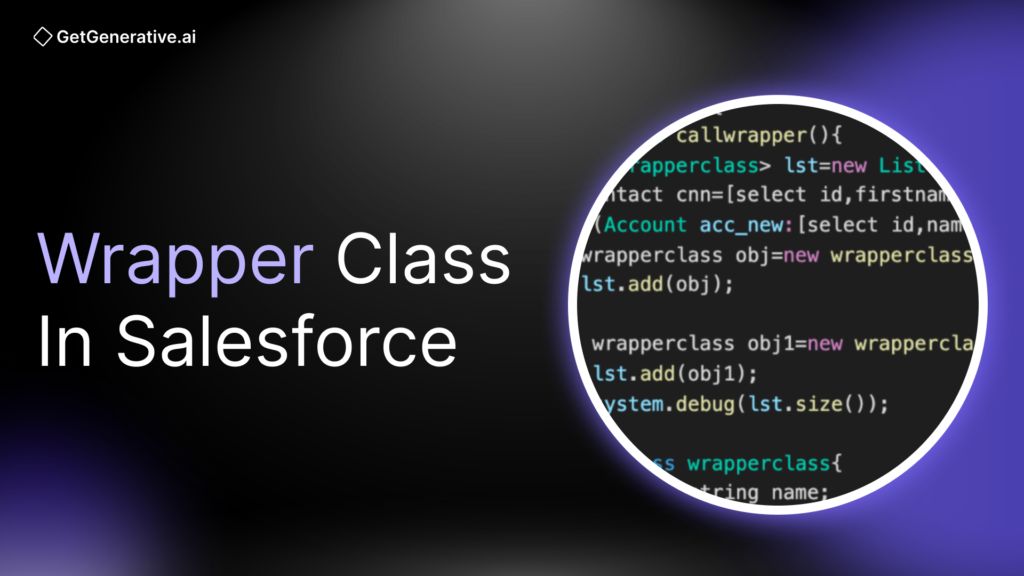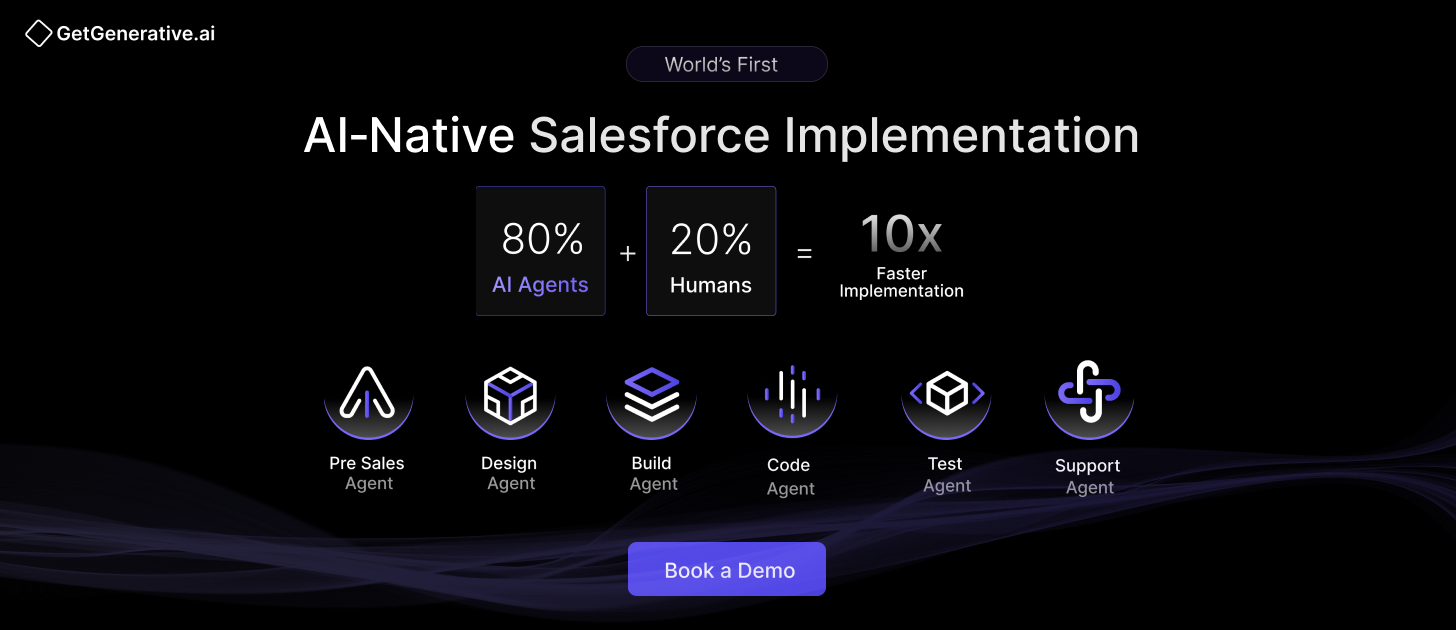Wrapper Class in Salesforce
With over 150,000 companies worldwide relying on Salesforce, developers constantly seek ways to streamline their code and enhance functionality. One powerful tool in the Salesforce developer’s arsenal is the wrapper class.
In this comprehensive guide, we’ll explore the world of Salesforce wrapper classes, including their structure, uses, benefits, and real-world applications. Whether you’re a seasoned Salesforce developer or just starting your journey, understanding wrapper classes will elevate your development skills and efficiency.
What is a Wrapper Class in Salesforce?
A wrapper class in Salesforce is a custom Apex class that encapsulates and combines different data types or objects into a single unit. It’s essentially a container that allows developers to create a custom structure to hold related information together. This custom structure can include standard Salesforce objects, custom objects, primitive data types, and even other wrapper classes.
The primary purpose of a wrapper class is to organize and manipulate data more efficiently, especially when working with complex data structures or when you need to pass multiple related pieces of information between different parts of your Salesforce application.
Structure of a Wrapper Class
The structure of a wrapper class in Salesforce is flexible and can be tailored to meet specific needs. However, a typical wrapper class usually follows this general structure:
public class WrapperClassName {
// Properties
public TypeName property1 { get; set; }
public TypeName property2 { get; set; }
// … more properties as needed
// Constructor
public WrapperClassName(TypeName param1, TypeName param2) {
this.property1 = param1;
this.property2 = param2;
// … initialize other properties
}
// Methods (optional)
public ReturnType methodName() {
// Method implementation
}
Key components of a wrapper class include:
- Properties: These variables hold the data you want to encapsulate.
- Constructor: This method initializes the wrapper object and sets initial values for its properties.
- Methods: Optional functions that can manipulate or return data from the wrapper class.
How do Wrapper Classes Improve Data Organization in Salesforce?
Wrapper classes significantly enhance data organization in Salesforce by:
- Logical grouping: Related data from different objects can be grouped together, making managing and understanding complex relationships easier.
- Reduced redundancy: Instead of duplicating code to handle related data separately, wrapper classes allow you to encapsulate the logic in one place.
- Improved readability: By organizing data into meaningful structures, code becomes more readable and self-documenting.
- Flexibility: Wrapper classes can be easily modified to accommodate changes in data requirements without affecting the rest of the codebase.
- Abstraction: They provide a layer of abstraction, allowing you to work with complex data structures in a simplified manner.
Also Read – Relationships in Salesforce: A Complete Guide
What is an example of using a wrapper class on a Visualforce page
Here’s an example of how a wrapper class can be used in conjunction with a Visualforce page to display a list of accounts with their related contacts:
public class AccountContactWrapper {
public Account acc { get; set; }
public List<Contact> contacts { get; set; }
public AccountContactWrapper(Account a, List<Contact> c) {
this.acc = a;
this.contacts = c;
}
}
public class AccountContactController {
public List<AccountContactWrapper> accountList { get; set; }
public AccountContactController() {
accountList = new List<AccountContactWrapper>();
for(Account a : [SELECT Id, Name, (SELECT Id, FirstName, LastName FROM Contacts) FROM Account LIMIT 10]) {
accountList.add(new AccountContactWrapper(a, a.Contacts));
}
}
And the corresponding Visualforce page:
<apex:page controller=”AccountContactController”>
<apex:repeat value=”{!accountList}” var=”wrapper”>
<h2>{!wrapper.acc.Name}</h2>
<apex:repeat value=”{!wrapper.contacts}” var=”contact”>
<p>{!contact.FirstName} {!contact.LastName}</p>
</apex:repeat>
</apex:repeat>
This example demonstrates how a wrapper class can combine Account and Contact data, making it easy to display related information on a Visualforce page.
What are the Benefits of Using Wrapper Classes in Salesforce?
Using wrapper classes in Salesforce offers several advantages:
- Improved code organization: Wrapper classes help logically group related data, leading to cleaner and more organized code.
- Enhanced data manipulation: They allow for easier manipulation of complex data structures, simplifying operations like sorting or filtering.
- Better performance: Wrapper classes can improve overall application performance by reducing the need for multiple queries or complex data joins.
- Increased reusability: Well-designed wrapper classes can be reused across different parts of your Salesforce application, promoting code reuse.
- Simplified testing: Wrapper classes make creating test data and mock objects easier, facilitating more comprehensive unit testing.
- Improved type safety: Encapsulating data in strongly typed classes reduces the risk of runtime errors caused by type mismatches.
How Can Wrapper Classes Be Utilized in Lightning Components?
Wrapper classes can be effectively used in Lightning Components to:
- Streamline data transfer: Use wrapper classes to package complex data structures for easy transfer between Apex controllers and Lightning Components.
- Enhance component reusability: Use wrapper classes to handle various data structures to create more flexible and reusable Lightning components.
- Improve performance: Reduce the number of server calls by bundling related data into a single wrapper class.
- Simplify component logic: Use wrapper classes to encapsulate complex business logic, keeping your Lightning Component code clean and focused on presentation.
Here’s a simple example of how a wrapper class can be used with a Lightning Component:
public class OpportunityWrapper {
@AuraEnabled public Opportunity opp { get; set; }
@AuraEnabled public List<OpportunityLineItem> lineItems { get; set; }
public OpportunityWrapper(Opportunity o, List<OpportunityLineItem> items) {
this.opp = o;
this.lineItems = items;
}
}
public class OpportunityController {
@AuraEnabled
public static OpportunityWrapper getOpportunityData(Id oppId) {
Opportunity opp = [SELECT Id, Name FROM Opportunity WHERE Id = :oppId];
List<OpportunityLineItem> items = [SELECT Id, ProductCode, Quantity, UnitPrice FROM OpportunityLineItem WHERE OpportunityId = :oppId];
return new OpportunityWrapper(opp, items);
}
This wrapper class can then be easily consumed in a Lightning Component:
({
init: function(component, event, helper) {
var action = component.get(“c.getOpportunityData”);
action.setParams({ oppId: component.get(“v.recordId”) });
action.setCallback(this, function(response) {
var state = response.getState();
if (state === “SUCCESS”) {
var wrapper = response.getReturnValue();
component.set(“v.opportunity”, wrapper.opp);
component.set(“v.lineItems”, wrapper.lineItems);
}
});
$A.enqueueAction(action);
}
Also Read – Governor Limits in Salesforce
What are Some Common Use Cases for Wrapper Classes in Salesforce?
Wrapper classes find application in various scenarios in Salesforce development:
- Custom table displays: Create wrapper classes to hold data for custom table displays in Visualforce pages or Lightning Components.
- Complex data operations: Use wrapper classes when performing operations on multiple related objects simultaneously.
- API integrations: Wrapper classes can map external API responses to Salesforce data structures.
- Bulk data processing: Implement wrapper classes to handle bulk data operations efficiently.
- Custom sorting and filtering: Create wrapper classes for complex data structures with custom sorting or filtering logic.
- Multi-object forms: Use wrapper classes to handle data from forms that span multiple objects.
- Report generation: Implement wrapper classes to structure data for custom report generation.
Best Practices for Designing Wrapper Classes in Salesforce
To maximize the benefits of wrapper classes and ensure their efficient implementation, it’s essential to follow some best practices. Here’s what you should keep in mind:
1. Define Clear Objectives
- Before creating a wrapper class, identify the specific problem you aim to solve. Whether it’s grouping data, improving readability, or enabling complex operations, having a clear goal will streamline the design process.
2. Keep It Simple
- Avoid overloading wrapper classes with excessive logic or data. Focus on the primary purpose and keep methods and properties concise and purposeful.
3. Leverage Strong Typing
- Use strongly typed properties to reduce runtime errors. Ensure all attributes are properly defined with the correct data types for better debugging and code clarity.
4. Optimize for Performance
- Minimize the use of large or redundant queries within your wrapper class logic. Always consider governor limits and optimize SOQL queries by using relationships or selective filters.
5. Use Descriptive Names
- Choose meaningful names for your wrapper class and its properties. This makes the code self-documenting, improving readability for your team and future maintainers.
6. Test Thoroughly
- Write comprehensive unit tests for your wrapper classes to validate their behavior across various scenarios. Include edge cases to ensure reliability in production.
7. Document Your Wrapper Classes
- Add comments to describe the purpose of your wrapper class, its properties, and methods. This is especially useful in collaborative projects or when revisiting older code.
Conclusion
Wrapper classes are a powerful tool in the Salesforce developer’s toolkit. They offer improved data organization, enhanced code readability, and increased efficiency. By encapsulating related data and logic into cohesive units, wrapper classes enable developers to create more maintainable and scalable Salesforce applications.
At GetGenerative.ai, we’ve reimagined Salesforce implementation—built from the ground up with AI at the core. This isn’t legacy delivery with AI added on. It’s a faster, smarter, AI-native approach powered by our proprietary platform.
👉 Explore our Salesforce AI consulting services
Frequently Asked Questions (FAQs)
1. Are wrapper classes only useful for complex data structures?
No, wrapper classes can be beneficial even for simpler data structures, improving code organization and reusability.
2. Can wrapper classes be used in Salesforce triggers?
Yes, wrapper classes can be very useful in triggers for organizing and manipulating data efficiently.
3. Do wrapper classes impact Salesforce governor limits?
While wrapper classes don’t directly impact governor limits, they can help manage complex operations more efficiently, potentially reducing the risk of hitting these limits.
4. Can wrapper classes be used with Salesforce Flow?
Yes, wrapper classes can be used with Salesforce Flow through Apex-defined types, allowing for more complex data structures in Flow.
5. Is there a performance overhead when using wrapper classes?
The performance impact of wrapper classes is generally negligible and is often outweighed by the benefits they provide in code organization and data handling.




